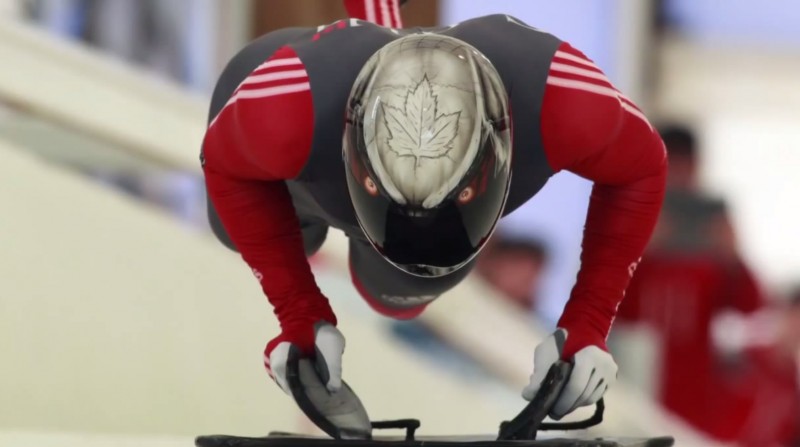
One of Canada's Skeleton Team members with his eye-catching new helmet.
Four members of Canada’s Skeleton Team, a sport similar to luge, recently donned new helmets that will be worn at the Winter Olympics in Sochi.
The athletes took their ideas of skeleton-themed designs to artist Jason Bartziokas and other design companies in order to make them a reality. The intricate, yet intimidating designs work to prove a point that the team means business.
Canada took home gold for the men’s skeleton event in 2006 and 2010, and team members Eric Nielson from Kelowna and John Fairbairn from Calgary are now preparing to defend the title in Sochi this winter.
In 2006, Mellisa Hollingsworth from Alberta took home bronze, which she and team member 26-year-old Sarah Reid will attempt to surpass this year.
“I had been wanting to get my helmet painted for quite a while, and originally wanted an image that I found off the internet of a girl’s face that was half normal, half skull. Jason Bartziokas in Jasper suggested doing an image that was more symmetrical as the main image on the top of the helmet, because he said that would register a lot better from far away,” Reid said. “I told him that what I liked about the other image was the fact that it was kind of feminine, but still kind of scary and deadly looking. He recommended I look up ‘day of the dead’ images on the internet, and when I found one I liked I sent it along to him.”
For Nielson, he just wanted a helmet that was “bad ass.”
“It’s pretty much a ‘Demon Head’ helmet that is on fire and is breathing fire out of the mouth that are skulls,” he said, according to the Canadian Olympic Team Official Website. “I’m not artistic at all so all I had was an idea that I wanted a scary skull design, and Jason pretty much ran with it. He gets all the credit for it. He went above and beyond what my expectations were.
To see the helmets, check out this post on the Canadian Olympic Team Official Website.
According to the informational page about Canada’s Skeleton Team, it isn’t clear where the name “skeleton” came from. One of the theories is that in 1982 an Englishman made a new sled for him and his friends that was created mostly from metal, which was the bare bones of a sled and more so resembled a skeleton. Another explanation is that it came from the name “Skele,” which evolved from an incorrect Anglicization of the Norwegian word “Kjaelke.”
In order to get an effective start to a skeleton run, athletes wear spiked shoes that provide a greater grip on the ice. They run alongside their sled while holding it, then proceed to dive onto the sled, launching them into the race. According to the description, positioned head-first and stomach-down, athletes will use slight shoulder, head or body movements to steer the sled. Skeleton races are timed to the hundredth of a second.
Image is a screenshot from video by Canadian Olympic team on YouTube
 Your Privacy Choices
Your Privacy Choices
 The
The